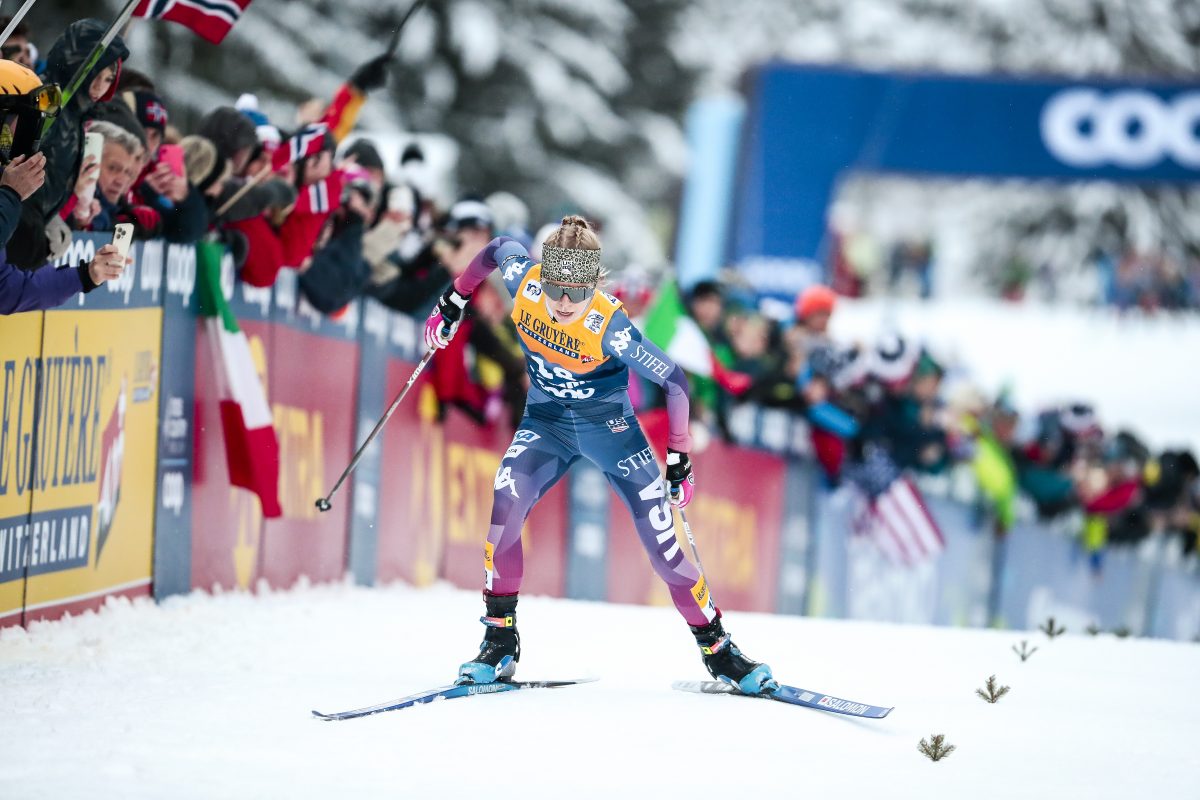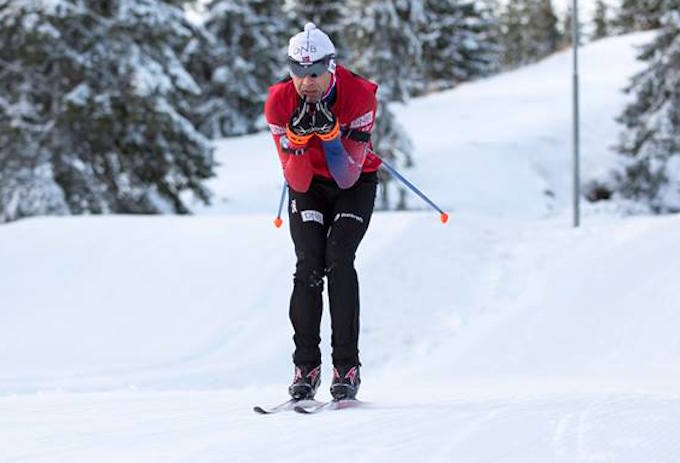
Ole Einar Bjørndalen opened his 23rd World Cup season with a victory on Wednesday, winning the 20-kilometer individual in Östersund, Sweden. The victory, which was technically his 94th World Cup win, came almost 20 years after he won his first World Cup in January 1996.
The 41-year-old Norwegian biathlete is the winning-most winter athlete in history with more Olympic medals and world champion titles than anyone else. With eight Olympic golds and 19 World Championships wins, the 2016 World Championships in Oslo, Norway, remain his over-arching goal. To become a world champion on home turf in Holmenkollen, a feat he has yet to achieve, would be the jewel of his crown.
After two decades of competing at the top level, the King of Biathlon took some time to reflect on the changes and developments in the sport in an exclusive interview with FasterSkier.
“The overall level of the athletes has changed a lot. When I first started, there were a lot fewer who skied really fast,” Bjørndalen said at the Madshus factory on Nov. 26 in Biri, Norway.
A Madshus athlete since 2004 (and a Rossignol skier before that), he said he believes both the improvements in equipment and increasing professionalism across the field have contributed to raising the overall level of international racing.
More refined
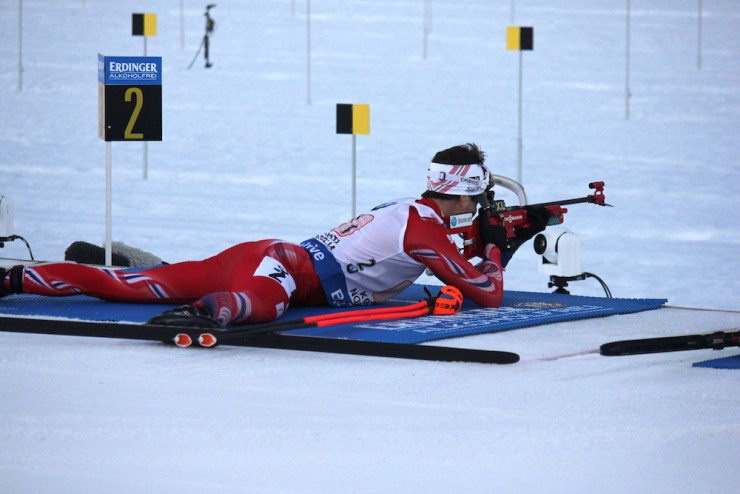
One of the biggest changes was the transition from coarse-bore to fine-bore rifles, which occurred about five years before Bjørndalen started on International Biathlon Union (IBU) World Cup.
“We have used the same weapon and the same mechanical setup during the entire time I’ve been active,” Bjørndalen said, noting that the weapon change made the shooting times drop significantly.
“[Norwegian biathlete] Eirik Kvalfoss would use a minute to shoot one series. These days, none of the best racers use more than 20 seconds,” he added.
The venues have also become bigger and better, and attract more spectators, which also contributes to the growth of the sport.
“Now, there are never less than 5,000 spectators at the stadium at World Cup races, and often we will have more than 35,000,” Bjørndalen said.
Less natural snow and more manmade
Over the years, Bjørndalen has seen the climate change and noticed less snow than when he first started racing. While the lack of snow often affects the venues and events, but he said organizers are making due.
“The climate change has been here for a while, especially in Germany and Central Europe. There is definitely less snow, but at the same time, the organizers have become very good at making snow, storing snow and developing strategies to handle the changes,” he said.
“Manmade snow is very good in that it is very predictable, and it often provides more even conditions for everyone than natural snow,” he added. “With manmade snow, it doesn’t matter as much whether you start early or late in the competition.”
Better gear
Above all, he said the evolution of the equipment has been the biggest factor driving the sport forward.
“With the skis in particular, it seems like there is a small revolution almost every season,” Bjørndalen said. “Skis are now a lot lighter, more stable and faster, and there are entirely different materials used for both bases and construction than when I first started racing.”
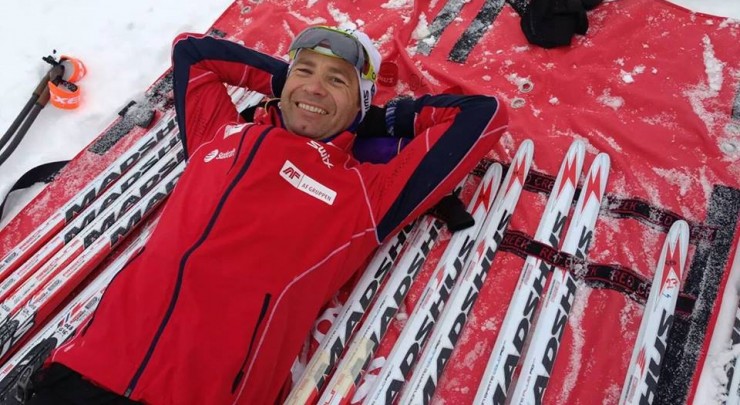
In his mind, moving to shorter, flatter tips was one of the biggest improvements in skis, and he played a key role in that development.
“I was one of the first to cut my tips, and I shortened them by five centimeters,” he said. “That cut delivers a much faster return of the ski, and you’re ready to make a new push and stride sooner. We beat Fischer to the punch on that. I cut my tips about two weeks before they were going to launch their hole-tip. I’ve been told that this caused a bit of chaos and confusion at Fischer. They didn’t know what to think of my tips.”
Ski boots have also made some leaps since Bjørndalen started racing, becoming both stiffer and lighter and better suited for skating.
“With the new integrated carbon sole construction that came last season, the boots are even stiffer and still lighter,” he explained. “And with less material, you have better contact with the snow and more control of the ski.”
The combination of all the equipment improvements has contributed to the biathletes both skiing and shooting faster than 20 years ago, but that doesn’t diminish the amount of work today’s athletes put in each day.
According to Bjørndalen, athletes now put in far more training hours at the range and on physical conditioning than when he started racing in the 1990s.
Product development adds a dimension
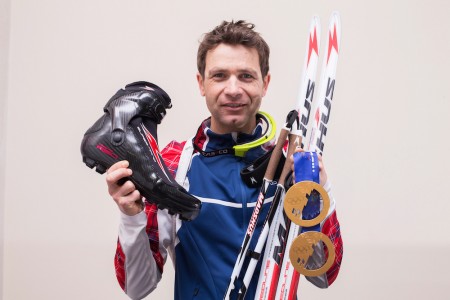
Being involved with the factory and the Madshus product development team is important to Bjørndalen, as is sharing his experiences and contributing to the advancement of the sport, which he said gives his career an added dimension and motivates him.
“You can put is this way: sport is training, and equipment is development,” he said. “Biathlon is still a young sport, and there is a lot more to gain. To be a part of that development is extremely exciting to me.
“Being an active part of the research and development, and being included and involved in all the processes is a major reason why I switched equipment,” he said of his switch to Madshus in 2004. “Madshus is really on the cutting edge of equipment, they are extremely good at research and development and the process from idea to innovation is fast.
“With Madshus, you call and discuss an idea, and 24 hours later, their product engineers are after it,” Bjørndalen said. “With other brands, it can take weeks.”
From 200 to 2 pairs of skis
Bjørndalen is known for being a stickler about details in everything he does, and equipment is no exception. He is interested in both waxing and tuning, and he takes his time selecting the skis for his quiver.
“I am interested in waxing and the technical aspects of tuning skis. I do a lot of waxing with my training skis, but for races I don’t get to spend much time in the wax room,” he said.
However, picking skis for each competition is the responsibility of the athlete. Generally, Bjørndalen brings two pairs of skis to the venue the morning of a race, and there is a lot of effort that goes into picking those pairs.
“I typically test 10 to 12 pairs of skis the day before a race, and prior to the race season, I test maybe 200 pairs in order to find those 10 to 12 pairs that stand out,” he explained. “All the top racing skis are really good. But some pairs are damned good, and those are the ones I’m after. Some seasons I have to test more to find them, sometimes I find them right away.
“Sport is training, and equipment is development. Biathlon is still a young sport, and there is a lot more to gain. To be a part of that development is extremely exciting to me.” — Ole Einar Bjørndalen, Norway’s winning-most Winter Olympian and 19-time world champion biathlete
“The Redline series was a huge step up for the whole industry when they entered the market three seasons ago, especially the classic skis,” he added. “The difference between the Redline classic skis and their predecessor is substantial.”
He would know. Although all biathlon competitions are skate races, Bjørndalen spends a lot of hours on kick wax.
“I do a lot of classic skiing, which is really important in order to get better at skating,” he said.
The seasoned veteran is known for constantly seeking new insights and research on everything from training and equipment, to diet and lifestyle, to gain the split-second margin that separates the winner from the rest of the field.
However, in the first World Cup race of his 23rd season, Bjørndalen won by more than a hair. He didn’t miss a single target. The last time he raced a perfect 20 k was ten years ago. He skied like a tornado with perfect technique, milking each glide and getting the most from every push off. At the end of the day, Bjørndalen was almost half a minute ahead of second place.
“I had not expected that I would do so well, but I know I’m in good shape,” Bjørndalen told NRK at the time. “I don’t have too many secrets. I have strong motivation. Maybe that’s the secret.”
Inge Scheve
Inge is FasterSkier's international reporter, born and bred in Norway. A cross-country ski racer and mountain runner, she also dabbles on two wheels in the offseason. If it's steep and long, she loves it. Follow her on Twitter: @IngeScheve.

